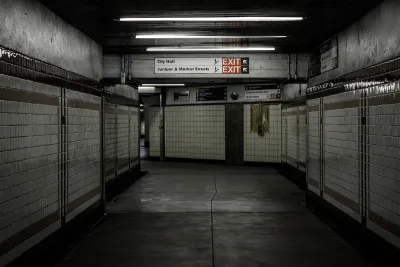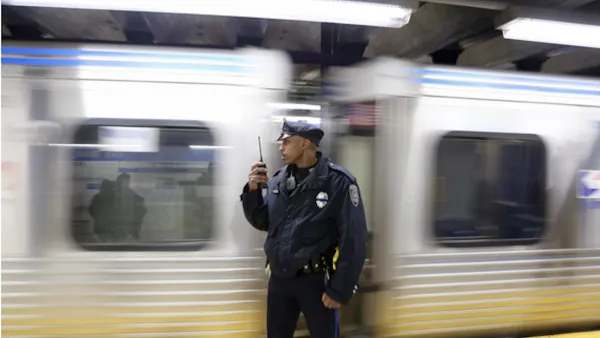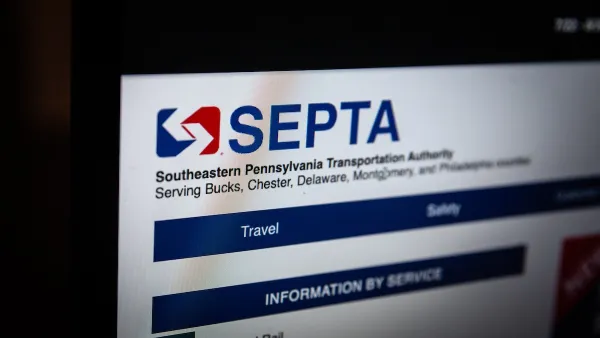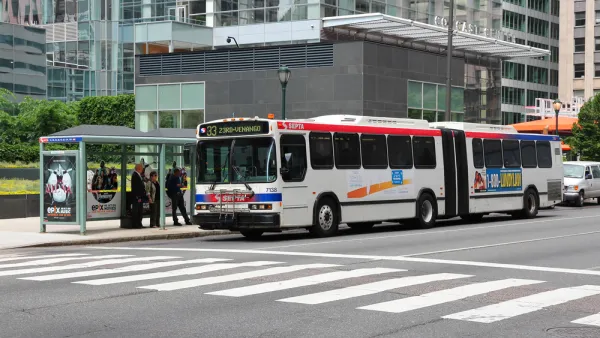More than a third of Americans believe major transit systems are too unsafe to ride. The built environment can change that.

In an article for WHYY, Owen Racer and Jadon George describe how the built environment in and around transit infrastructure — in Philadelphia and beyond — contributes to a sense of fear among riders, causing them to avoid public transit due to a heightened anxiety created by reports of violent incidents.
Citing Yvette Sheline of the University of Pennsylvania’s Department of Psychiatry, the article explains, “From gates and sidewalks to subterranean hallways, the physical environments that make up a transit system can affect how safe people feel using them.”
The article describes a failed SEPTA effort to deploy an AI-powered surveillance tool to scan for firearms in stations and trains, as well as how the architecture of stations can improve visibility and openness and make riders feel safer. While some systems, including SEPTA and New York City’s subway system, are deploying additional law enforcement, Sheline says an increased police presence serves to “raise feelings of anxiety for most riders as it signals the environment is dangerous.”
FULL STORY: Can SEPTA’s infrastructure counter transit anxiety?

National Parks Layoffs Will Cause Communities to Lose Billions
Thousands of essential park workers were laid off this week, just before the busy spring break season.

Retro-silient?: America’s First “Eco-burb,” The Woodlands Turns 50
A master-planned community north of Houston offers lessons on green infrastructure and resilient design, but falls short of its founder’s lofty affordability and walkability goals.

Delivering for America Plan Will Downgrade Mail Service in at Least 49.5 Percent of Zip Codes
Republican and Democrat lawmakers criticize the plan for its disproportionate negative impact on rural communities.

Test News Post 1
This is a summary

Test News Headline 46
Test for the image on the front page.

Balancing Bombs and Butterflies: How the National Guard Protects a Rare Species
The National Guard at Fort Indiantown Gap uses GIS technology and land management strategies to balance military training with conservation efforts, ensuring the survival of the rare eastern regal fritillary butterfly.
Urban Design for Planners 1: Software Tools
This six-course series explores essential urban design concepts using open source software and equips planners with the tools they need to participate fully in the urban design process.
Planning for Universal Design
Learn the tools for implementing Universal Design in planning regulations.
EMC Planning Group, Inc.
Planetizen
Planetizen
Mpact (formerly Rail~Volution)
Great Falls Development Authority, Inc.
HUDs Office of Policy Development and Research
NYU Wagner Graduate School of Public Service





























